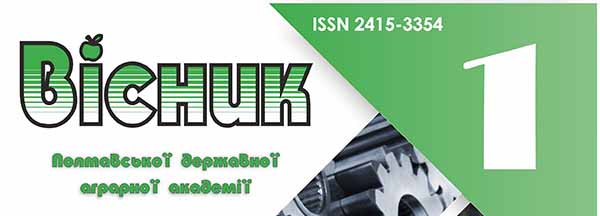ЕФЕКТИВНІСТЬ ОСІМЕНІННЯ КОРІВ У СПОНТАННУ ОХОТУ, ВИЗНАЧЕНУ ЗА ДОПОМОГОЮ СИСТЕМИ АВТОМАТИЗОВАНОГО КОНТРОЛЮ ЇХ РУХОВОЇ АКТИВНОСТІ
DOI:
https://doi.org/10.31210/visnyk2021.04.25Keywords:
cows, insemination, estrus, automated control of motional activityAbstract
The aim of this study was to establish the effectiveness of cows’ insemination in spontaneous estrus, detected by automated control of their motional activity, compared with induced estrus after hormonal stimulation. Spontaneous estrus was determined using the AfiActII system (n=767). Animals were inseminated 8 hours after the peak of their motional activity. Synchronization of estrus and ovulation was reached with GnRH and PGF2α preparations based on the Ovsynch protocol (n=280). Cows were inseminated according to the protocol. In the first quarter, at inseminating cows in spontaneous estrus, the impregnation occurred in 62.5 % of cows with the insemination index of 1.5±0.5. The service period of animals in this group was 70±10 days, which was within normal limits. At induced estrus, pregnancy was recorded in 80 % of cows with an insemination index of 1.5±0.5, and their service period was 110±20 days, which was more than the physiological norm. On the whole, 60.6 % of cows of the first group and 53.2% of the second group were impregnated. In the second quarter, the number of impregnated cows in spontaneous estrus, as compared with induced, was significantly higher, almost 10 times (p>0.1). Among them, 75 % of cows of the first group were impregnated, with 1.5±0.5 insemination index and the service period of 70±10 days. In the second group, 78% of animals became pregnant with the same insemination index and the service period of 110±20 days. In the third quarter, the fertilization of cows in both groups decreased: in the first group it was 52.7 %, in the second – 35.8 %. In addition, among the cows of the first group there were 2.6–5.7 % of those with an insemination index of 6.5±0.5. The system of automated control of motional activity provides continuous monitoring of cows, accurate and automated identification of animals during estrus, minimum requirements to workers and high accuracy in determining the optimal insemination time. Such a system enabled to ensure cows’ impregnation in spontaneous estrus at the level of 63.7 %. Among them, 68.63±6.25 % of cows had an insemination index of 1.5±0.5 and service period of up to 70±10 days.When using the system of hormonal estrus and ovulation stimulation, pregnancy was registered in 46.7 % of animals, among which – 80±5 % of cows after 1–2 inseminations, with a service period of 110±20 days. In order to reduce the service period to physiological standards (70±20 days), the cows with multiple unproductive inseminations should undergo gynecological examination after the 3rd insemination. For animals in which estrus was not detected before 60 days after parturition, it is advisable to use synchronization schemes immediately after the detection of anaphrodisia.

 Creative Commons Attribution 4.0 International Licens
Creative Commons Attribution 4.0 International Licens